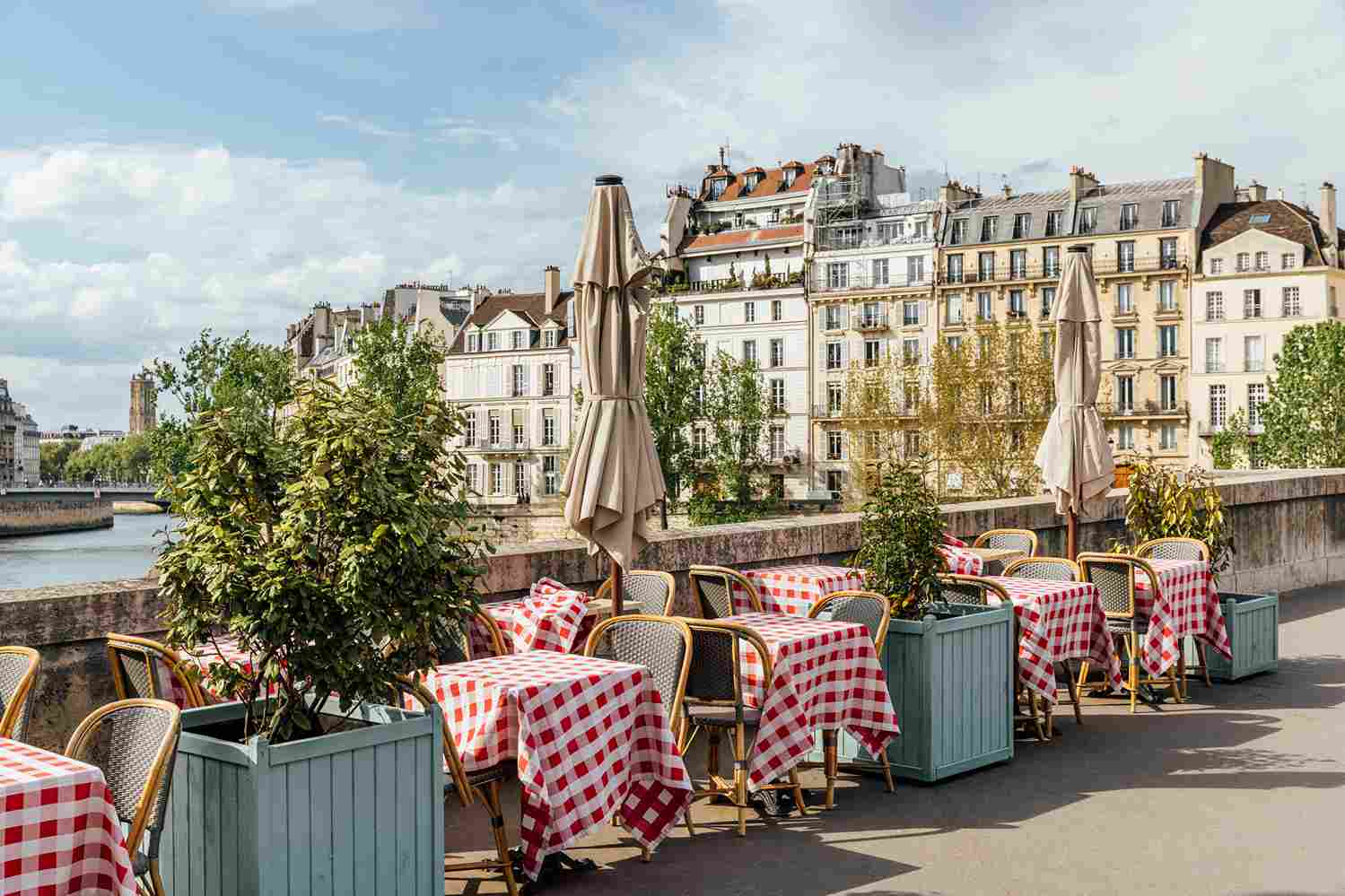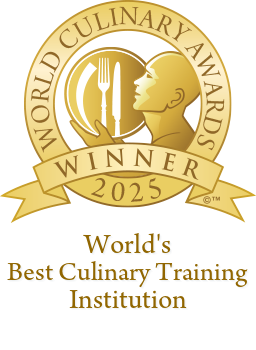What does it take to be one of the best restaurants worldwide

Dining at one of the world's best restaurants is a true culinary discovery, a celebration of creativity and innovation and a testament to the artistry of food.From the vibrant streets of Hong Kong to the bustling avenues of Mexico City, there are more than 2500 Michelin star restaurants worldwide that draw discerning diners from around the globe in search of gastronomic excellence. Among these, nine restaurants are heralded as the ‘best of the best’.
But what does it take to be an extraordinary restaurant in the fiercely competitive world of fine dining? What sets the crème de la crème of restaurants apart from the rest?
From culinary creativity and innovation and exceptional dining experiences, commitment to quality and sustainability to consistency and attention to detail and the leadership and talent that drive it all, we'll look at the ingredients that elevate certain restaurants to legendary status.
How are restaurants rated?
While there is no universally standardized method for rating restaurants, several prominent systems and organizations play a significant role in shaping the culinary world and online reviews have made restaurant rankings more obvious to consumers.
Michelin guide
Originally created by the French tyre company Michelin to encourage travel and promote dining experiences, this guide employs anonymous inspectors who meticulously evaluate restaurants based on various criteria, including the quality of ingredients, culinary technique, creativity and consistency.
Restaurants are awarded Michelin stars, with a three-star restaurant representing the highest level of excellence. This is one of the most well-known awards in the restaurant industry.
Restaurant associations and guides
Many countries and regions have their own culinary guides that provide ratings and recommendations for local dining establishments.
These organizations often conduct their assessments based on factors such as food quality, service, ambiance and value for money, offering valuable insights and recommendations to diners seeking exceptional dining experiences.
Online review platforms
Platforms such as TripAdvisor, Yelp and Google reviews have become increasingly influential in shaping consumers' perceptions of restaurants.
They allow diners and food writers to share their experiences and provide feedback on restaurants, which can influence other diners' decisions and contribute to a restaurant's reputation.
World's 50 Best Restaurants
This list, compiled by the British company William Reed Business Media, ranks the top 50 restaurants worldwide based on the votes of an international panel of chefs, restaurateurs, food critics and culinary experts.
It aims to celebrate diversity and innovation in the global dining scene, highlighting restaurants that excel in creativity, ambiance and service.
The importance of the dining experience
In the world of fine dining, exceptional experiences use all the senses.
From the ambiance and decor to the impeccable service and personalized hospitality, each element plays a vital role in creating unforgettable moments for diners.
Beyond the plate
From the moment diners enter the restaurant to the final bite of dessert, every aspect of the experience is carefully curated to stimulate the senses and evoke emotions.
At the heart of creating memorable dining experiences is the food itself. Whether it's the vibrant colors of a beautifully plated dish or the aroma of freshly baked bread wafting through the air, every element of the meal is designed to evoke a sensory journey that transports diners to culinary bliss.
The ambiance factor
The design and decor of the restaurant set the tone for the meal, creating a sense of anticipation and setting the stage for culinary delights to come.
From the lighting and furniture to the artwork and music, every detail contributes to the overall atmosphere, creating a memorable and immersive environment for guests to enjoy.
Service excellence
Beyond the food and ambiance, it's the impeccable service, attentive staff and personalized hospitality that elevate a meal from good to unforgettable.
From the moment guests are greeted at the door to the final farewell, every interaction with restaurant staff should be marked by warmth, professionalism and genuine care.
Sourcing the finest ingredients
At the heart of every outstanding dish lies the quality of its ingredients. Top restaurants prioritize sourcing the finest, freshest ingredients available, often opting for seasonal and locally sourced produce to ensure maximum flavor and freshness.
This helps encourage sustainable practices such as ethical sourcing, waste reduction and energy efficiency to minimize restaurants’ environmental footprints.
The farm-to-table movement has gained momentum in recent years as consumers seek greater transparency and connection to the food they eat.
By sourcing directly from local farms and artisans, restaurants support sustainable agriculture practices while showcasing the freshest, most flavorful ingredients available.
This direct relationship between farmer and chef not only ensures quality and seasonality but also builds a sense of community and sustainability within the local food ecosystem.
Consistency and attention to detail
These are vital for ensuring every dining experience meets the highest standards. From maintaining consistency across all aspects of service to meticulously planning and executing every dish, top restaurants prioritize quality control to deliver unparalleled excellence.
Consistency is key
Top restaurants strive to uphold the same high standards of quality, service and hospitality with every guest, every meal, every day.
From the greeting at the door to the farewell at the end of the meal, every interaction is marked by professionalism, attention to detail and a commitment to exceeding expectations.
Whether it's the arrangement of garnishes on a plate or the folding of a napkin, no detail is too small to escape notice in the pursuit of perfection.
Quality control is another fundamental aspect of maintaining consistency and excellence in the kitchen.
Top restaurants implement rigorous quality control measures, including regular taste tests, kitchen inspections and staff training programs, to ensure every dish meets the highest standards of taste, texture and presentation.
By prioritizing quality at every step of the process, these establishments uphold their reputation for culinary excellence and leave diners with unforgettable dining experiences.
Culinary talent and leadership
At the helm of every great restaurant is a head chef whose leadership sets the tone for culinary excellence. Through their passion, creativity and unwavering dedication, these leaders inspire their teams to push the boundaries of gastronomy and strive for greatness.
By setting a clear vision and leading by example, they cultivate a culture of innovation, excellence and camaraderie.
Top chefs also understand the importance of investing in talent development and mentorship to bring on the next generation of culinary stars.
By providing opportunities for training, mentorship and professional development, they empower their teams to reach their full potential and excel in their craft.
Whether it's through hands-on training in the kitchen, culinary apprenticeships or educational programs, these chefs are committed to nurturing talent, continuous learning and growth.
Customer feedback and adaptability
By actively soliciting feedback and listening attentively to guest preferences, top restaurants gain valuable insights into diners' likes, dislikes and evolving tastes.
This can be achieved with comment cards, online reviews or direct communication with guests. Listening to feedback allows restaurants to adapt their menus, service and ambiance better to meet the needs and expectations of their patrons.
Embracing change
Continuous improvement is essential for staying ahead of the curve and maintaining relevance.
Top restaurants are always innovating and refining their offerings, seeking out new culinary trends and experimenting with new techniques and ingredients to keep their menus fresh and exciting.
By embracing a culture of innovation and excellence, these establishments ensure they remain at the forefront of the culinary field and continue to delight diners.
How culinary education can help you run a world-class restaurant
The cornerstone for aspiring restaurant managers aiming to lead a world-class establishment is quality gastronomic education. Here's how it can benefit you:
-
Mastery of techniques: through hands-on training and guidance from experienced chefs, you'll develop the cooking techniques needed to create incredible dishes and elevate your restaurant's reputation
-
Ingredient quality and sourcing: you'll learn to identify and procure the finest seasonal ingredients, ensuring your dishes shine with freshness and flavor. Understanding ingredient sourcing not only improves the dining experience but also encourages a deeper connection with local producers and suppliers
-
Menu development and innovation: culinary education includes menu development, teaching you to balance creativity with practicality and adaptability. By exploring new ingredients, flavors and techniques, you'll have the freedom to innovate and design a great menu for your restaurant
-
Leadership and management skills: studying restaurant management includes learning about staff training and customer service, empowering you to lead with confidence and professionalism. By mastering the art of delegation, communication and conflict resolution, you'll create a positive and productive work environment that encourages excellence and teamwork
-
Business acumen and entrepreneurship: from understanding restaurant economics and financial planning to developing marketing strategies and branding, you'll gain a full understanding of the business side of running a restaurant. Armed with this knowledge, you'll be better prepared to launch and sustain a successful venture in the competitive hospitality industry
Conclusion
Becoming a chef or manager at one of the best restaurants in the world is a task marked by passion, dedication and the relentless pursuit of excellence.
From culinary creativity and innovation to exceptional cuisine and incredible dining experiences, the top restaurants all offer memorable meals.
This requires commitment to quality and sustainability, consistency, attention to detail, leadership and adaptability. The path to culinary greatness is not easy, but it is possible.
Aspiring chefs and restaurant owners have plenty they can work on to help ensure they run a fantastic business. If you aspire to owning the next Michelin star restaurant, get started by learning the culinary arts from a respected school such as Ecole Ducasse.


